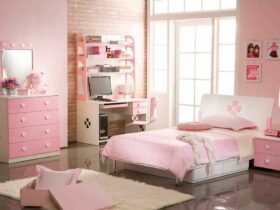If you’re a wine connoisseur, you might dream of having a splendid wine cellar. All amateur wine collectors want to store their exclusive and cherished wine collection safely. A great wine collection deserves to be stored properly so that you can enjoy them for the longest time. And that’s why building a wine cellar is something significant.
Having a wine cellar at home is a great way to show off your collection, as well as improve your home’s value. However, creating a perfect wine cellar can be a bit tricky. Whether you want to build a high-end wine cellar with a temperature regulating system or a simple rack in the basement, there are some basic rules to follow.

Before you start putting a hammer to nails, it’s essential to consider how you want to use your cellar. First, you need to determine whether you want a cellar purely for storing wine or displaying your vintage wine collection. Also, you may need to choose between traditional wood racking and contemporary metal racks. Once you have a clear picture of your dream wine cellar in mind, it’s time to consider a few other major factors. Below we’ve mentioned some important things to consider when constructing your wine cellar.
Determine Location
Do you want to sip wine in the cellar or from it? You should begin the process by determining the purpose, size, location of the cellar. You can build a wine cellar anywhere in the home. However, it would help if you ensured that the room doesn’t have a fluctuating or extreme temperature. Basements are usually the ideal location for a cellar, but you can also convert a small room or closet or space under your stairs into a wine cellar. Even rooms or spaces on the first floor can be used for a wine cellar if the constant temperature. The spaces with proper temperature are best suited because they will require less work on the part of the cooling system, leading to lower energy costs.
Choose Right Materials
You can take the risk of choosing inferior quality material that leads to crashing your precious wine collection. Space is first framed, sealed, and insulated. Then it’s time for electrical and plumbing fittings for preparing the space. After all the initial preparations, you need to choose the wall, ceiling, and flooring materials. For walls and ceilings, you should use a moisture-resistant drywall/plywood material. For racks, you may go for wood or metal wine racks depending on your budget and preferences. If you prefer wood, go for redwood or mahogany because these are resistant to rot in the cool, damp cellar environment. As far as flooring is concerned, avoid carpet and rugs. You should use a material like a tile or marble to hold up in the cool, humid wine-cellar environment.
Temperature and Humidity
As you might already know, wines need proper temperature and humidity. If there is too high or too low temperature, it will interfere with the wine’s aging. If the cellar’s temperature keeps fluctuating, it makes the cork expand and contract and allows air to pass into the wine. Ideally, the temperature for a wine cellar should be 50-60 degrees, and humidity is kept at 60-70 percent. It’s best to get a proper wine cooling system to maintain the right temperature. These cooling units also have built-in humidity management.
Lighting
Another important consideration is the lighting. Wines need dark space to age appropriately. This is the main reason behind storing the wine in colored bottles to keep the light out. You should use light that exudes minimum heat while still properly lighting the space. For wine cellars, recessed lighting and sconces can work well.









